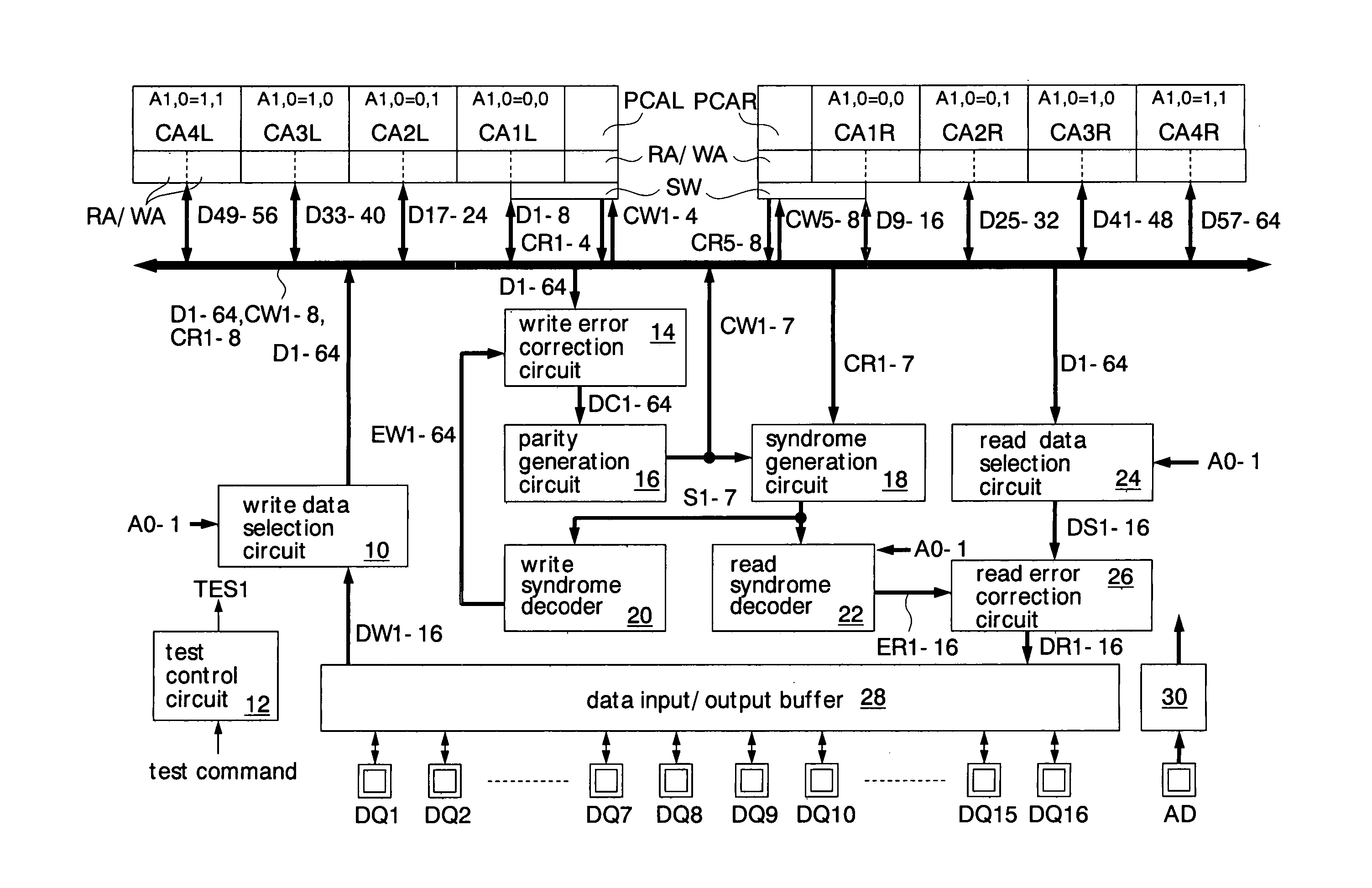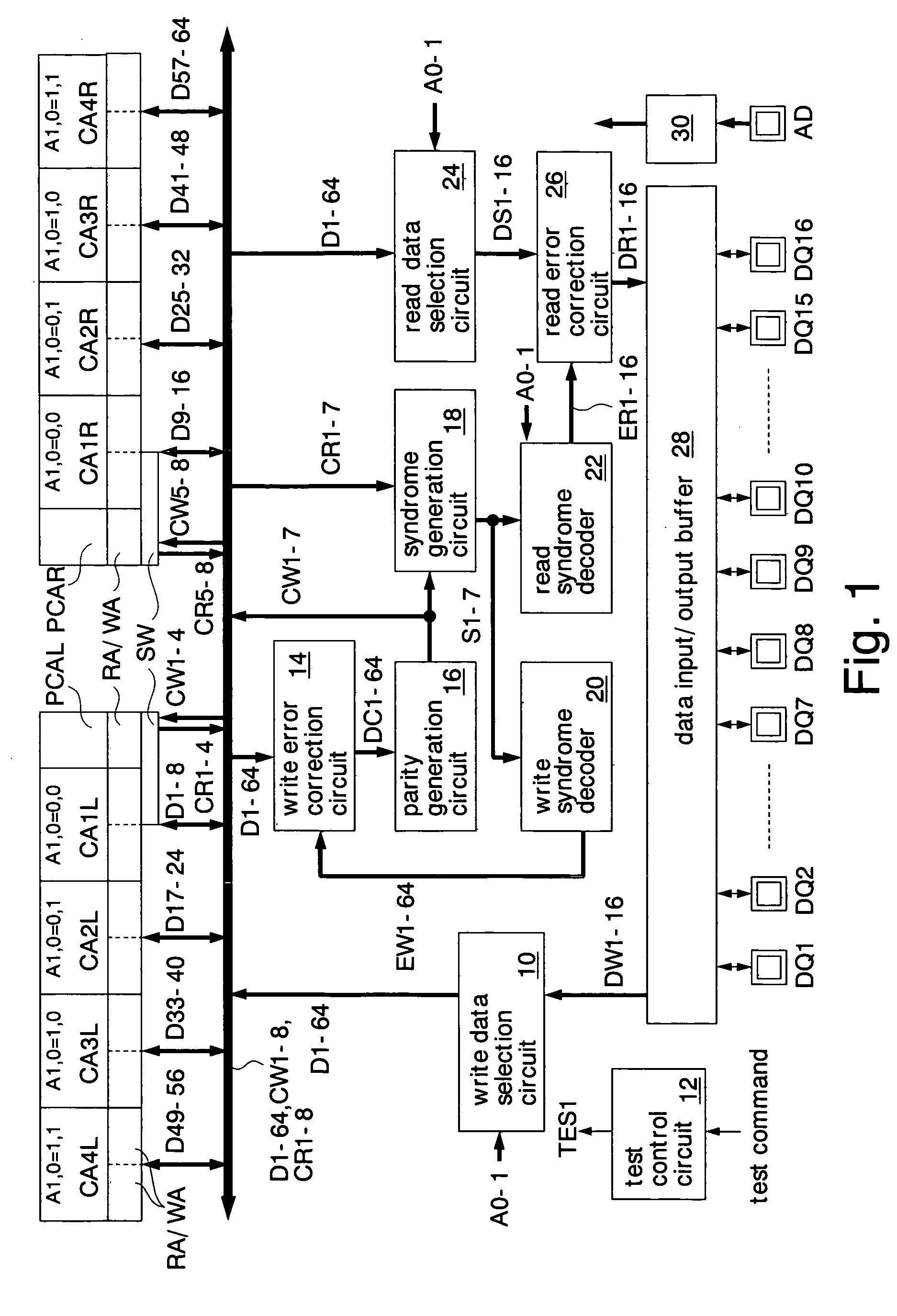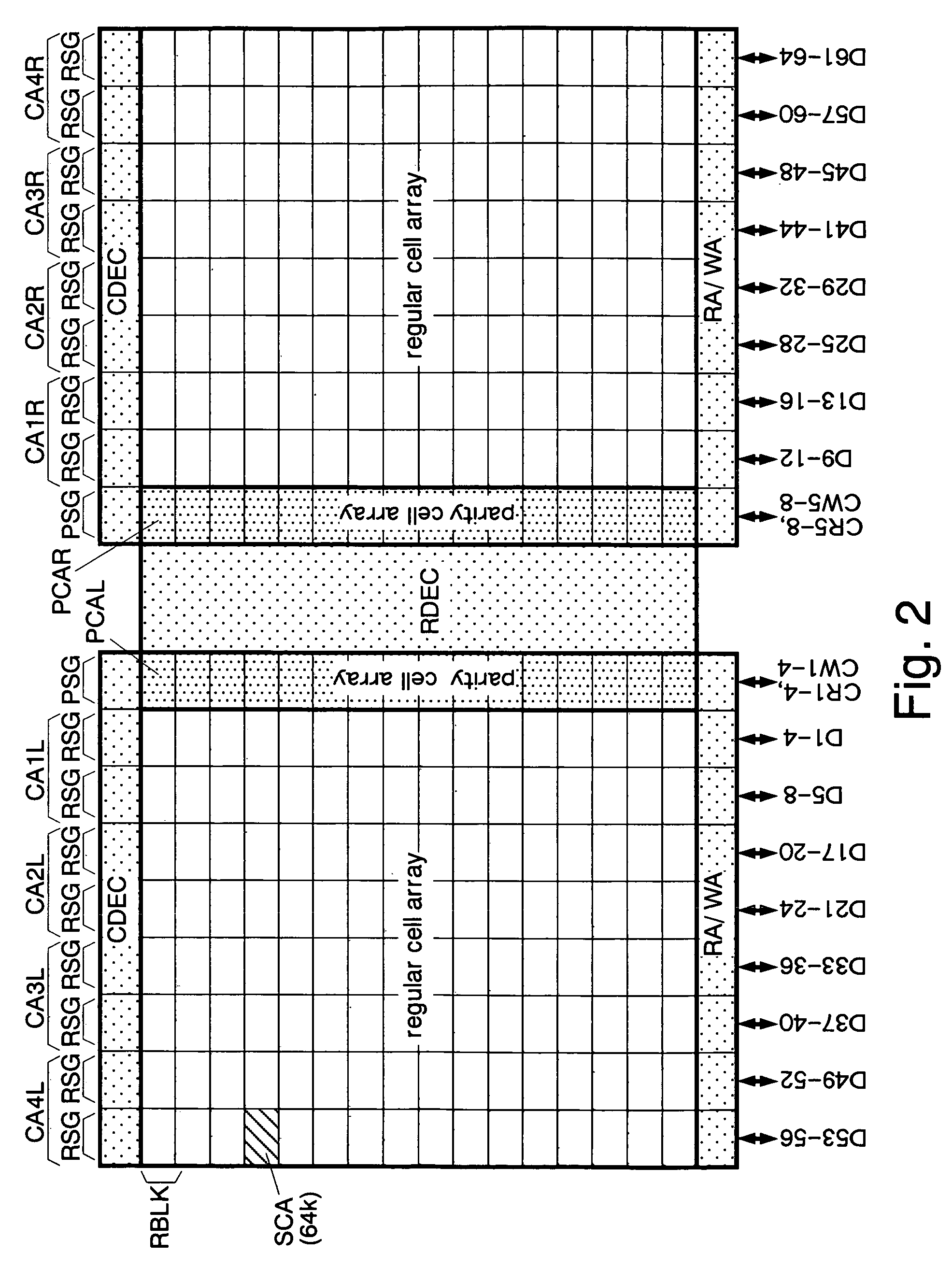Semiconductor memory having an error correction function
a technology of semiconductor memory and function, which is applied in the field of semiconductor memory having an error correction function, can solve the problems of switch circuit making the switch function ineffective, and it is difficult to write a desired pattern to the parity cell array
- Summary
- Abstract
- Description
- Claims
- Application Information
AI Technical Summary
Benefits of technology
Problems solved by technology
Method used
Image
Examples
first embodiment
[0053]FIG. 1 shows the semiconductor memory of the present invention. This semiconductor memory is formed as a pseudo SRAM on a silicon substrate by using a CMOS process. The pseudo SRAM has a memory core of a DRAM memory core and an SRAM interface.
[0054]The pseudo SRAM has regular cell arrays CA1 (CA1L, CA1R), CA2 (CA2L, CA2R), CA3 (CA3L, CA3R), CA4 (CA4L, CA4R) storing regular data supplied via external data terminals DQ1–16, parity cell arrays PCA (PCAL, PCAR) storing parity data, read amplifiers RA / write amplifiers WA, switch circuits SW, a write data selection circuit 10, a test control circuit 12, a write error correction circuit 14, a parity generation circuit 16, a syndrome generation circuit 18, a write syndrome decoder 20, a read syndrome decoder 22, a read data selection circuit 24, a read error correction circuit 26, a data input / output buffer 28, and an address buffer 30.
[0055]In addition to those shown in the drawing, the pseudo SRAM has an address decoder, command ter...
second embodiment
[0123]FIG. 14 shows a comparative example of the The same reference codes are used to designate the same elements as the elements in FIG. 9. In this example, each syndrome generation circuit 40A generates syndromes S1–4 (or S5–8) by using read data DR1–8 (or D9–16) and parity read data PR1–4 outputted from a switch circuit 48.
[0124]FIG. 15 shows details of the syndrome generation circuit 40A shown in FIG. 14. The syndrome generation circuit 40A is constituted of four circuit blocks for generating the 4-bit syndrome values S1–4. Each of the blocks has two 3-input exclusive-OR circuits XOR3 and a 2-input exclusive-OR circuit XOR2.
[0125]Parenthesized data out of input data of the exclusive-OR circuits XOR3 represent data actually received (exchange data) in the test mode. For example, the block generating the syndrome value S1 receives data D2–4, D6, D7, P1 in the normal operation mode, and receives data P2–4, D6, D7, D1 in the test mode. Therefore, the syndrome generation circuit 40A...
third embodiment
[0146]Since the inversion of the parity data CW2–3 is not necessary irrespective of the logics of the write data D1–64, the inversion circuit SINV of this embodiment is structured such that terminals receiving inversion control signals (TINV2–3 of the third embodiment) of the sub inversion circuits SINV corresponding to the parity data CW2–3 (CR2–3) are connected to a ground line VSS (dummy sub inversion circuits). Therefore, the dummy inversion circuits always output the parity data CW2–3 (CRI2–3) as they are without inverting them. Terminals receiving the inversion control signals in the other sub inversion circuits SINV receive a common inversion control signal TINV00. Since the operations of the plural sub inversion circuits SINV can be simultaneously controlled with the common inversion control signal TINV00, the inversion control circuit 36 can have a simple structure. Further, a wiring area of a signal line for transmitting the inversion control signal TINV00 can be made smal...
PUM
 Login to View More
Login to View More Abstract
Description
Claims
Application Information
 Login to View More
Login to View More - R&D
- Intellectual Property
- Life Sciences
- Materials
- Tech Scout
- Unparalleled Data Quality
- Higher Quality Content
- 60% Fewer Hallucinations
Browse by: Latest US Patents, China's latest patents, Technical Efficacy Thesaurus, Application Domain, Technology Topic, Popular Technical Reports.
© 2025 PatSnap. All rights reserved.Legal|Privacy policy|Modern Slavery Act Transparency Statement|Sitemap|About US| Contact US: help@patsnap.com



